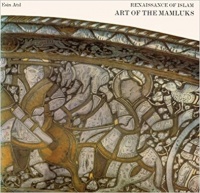kategóriák
- Közlekedés ajánlójegyzék
- Szocreál ajánlójegyzék
- Reklám ajánlójegyzék
- Fotó ajánlójegyzék
- Kínai-japán ajánlójegyzék
- Szentkép ajánlójegyzék
Új árakkal! - Új szentkép ajánlójegyzék II.
- 12 érdekes régiség
 Könyv
Könyv
 Bibliofilia
Bibliofilia
 Régiség
Régiség
 Metszet
Metszet
 Térkép
Térkép
 Fotó
Fotó
 Papírrégiség, Aprónyomtatvány
Papírrégiség, Aprónyomtatvány
 Plakát
Plakát
- Cirkusz
- Modern grafika
- Szocreál
- NER Irodalom
- Egyéb
kosár
üres a kosár
nincs bejelentkezve
Atil, Esin : Art of the Mamluks
- leírás
- további adatok
Renaissance of Islam
The Mamluk sultanate (1250–1517) emerged from the weakening of the Ayyubid realm in Egypt and Syria (1250–60). Ayyubid sultans depended on slave (Arabic: mamluk, literally “owned,” or slave) soldiers for military organization, yet mamluks of Qipchaq Turkic origin eventually overthrew the last Ayyubid sultan in Egypt, al-Malik al-Ashraf (r. 1249–50) and established their own rule. Their unusual political system did not rely entirely on family succession to the throne—slaves were also recruited into the governing class. Hence the name of the sultanate later given by historians. Following the defeat of Mongol armies at the Battle of ‘Ayn Jalut (1260), the Mamluks inherited the last Ayyubid strongholds in the eastern Mediterranean. Within a short period of time, the Mamluks created the greatest Islamic empire of the later Middle Ages, which included control of the holy cities Mecca and Medina. The Mamluk capital, Cairo, became the economic, cultural, and artistic center of the Arab Islamic world.
Az utolsó lapon és a hátsó borítón kisebb szakadással.
The Mamluk sultanate (1250–1517) emerged from the weakening of the Ayyubid realm in Egypt and Syria (1250–60). Ayyubid sultans depended on slave (Arabic: mamluk, literally “owned,” or slave) soldiers for military organization, yet mamluks of Qipchaq Turkic origin eventually overthrew the last Ayyubid sultan in Egypt, al-Malik al-Ashraf (r. 1249–50) and established their own rule. Their unusual political system did not rely entirely on family succession to the throne—slaves were also recruited into the governing class. Hence the name of the sultanate later given by historians. Following the defeat of Mongol armies at the Battle of ‘Ayn Jalut (1260), the Mamluks inherited the last Ayyubid strongholds in the eastern Mediterranean. Within a short period of time, the Mamluks created the greatest Islamic empire of the later Middle Ages, which included control of the holy cities Mecca and Medina. The Mamluk capital, Cairo, became the economic, cultural, and artistic center of the Arab Islamic world.
Az utolsó lapon és a hátsó borítón kisebb szakadással.
| állapot: |     |
| kategória: | Könyv > Idegennyelvű könyvek > Angol nyelvű > |
| kategória: | Könyv > Művészet > |
| kategória: | Könyv > Művészet > Iparművészet > |
| kategória: | Könyv > Művészet > Művészeti album > |
| kiadó: | Smithsonian Institution Press, 1981 |
| cikkszám / ISBN: | 0045632 |
| kötés: | fűzve |
| oldalszám: | 286 |
| könyv nyelve: | angol |









 Telefon:
Telefon: E-mail:
E-mail:







